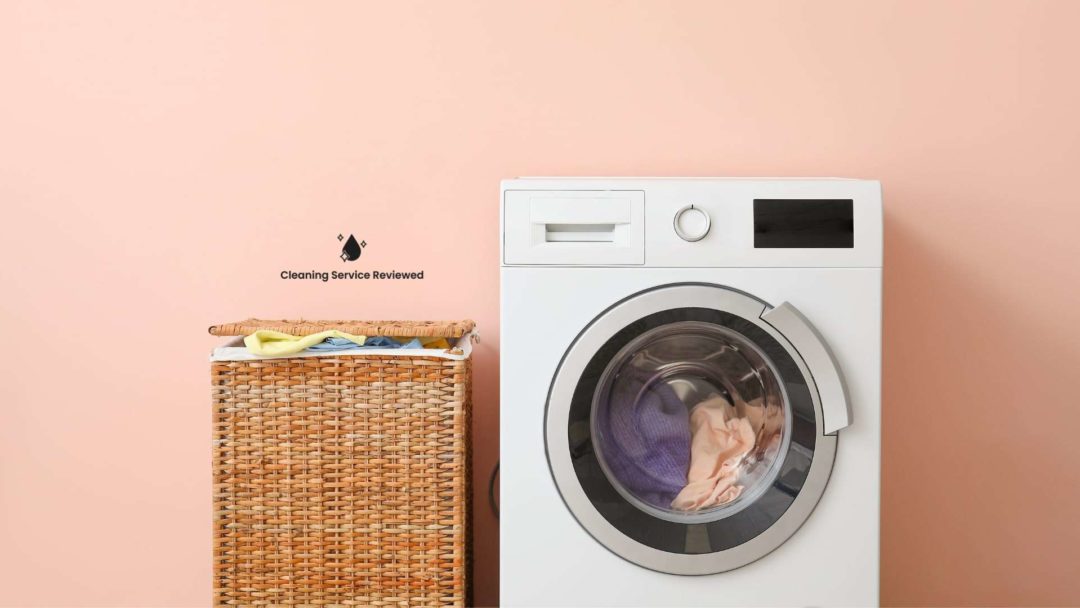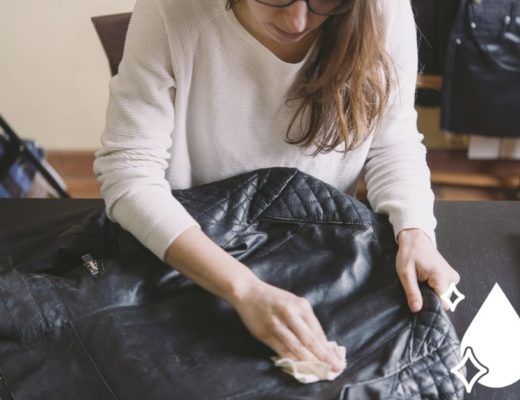Are you tired of doing laundry only to have your clothes come out smelling less than fresh? Your washing machine may not be working well as it used to.
To help you, here’s a detailed guide on how to clean a washing machine.
Washing Machine Cleaning: Supplies Needed
Before you begin cleaning your washing machine, prepare all the materials you’ll need. Here’s a list of essential cleaning items:
- White vinegar
- Baking soda (ammonium bicarbonate)
- Towels made of ultra-fine microfiber
- Scouring brush
How to Clean a Washing Machine with Baking Soda and Vinegar

Cleaning a washing machine with baking soda and vinegar is a safe and all-natural option. It’s also non-hazardous and environmentally friendly.
Follow these steps to clean a washing machine with baking soda and vinegar.
- Make a paste from a solution of 1/4 cup baking soda and 1/4 cup water in a small basin.
- Use the paste to clean the machine’s drum, rubber seal, and detergent dispenser. Use a scrub brush or an old toothbrush to remove grime and stains.
- Give the paste 15–20 minutes to work so the baking soda can remove dirt and the vinegar can remove mineral deposits and unpleasant smells.
- Combine two cups of white vinegar with two cups of boiling water in a bucket. Add the solution to the machine and run it at the highest temperature for the longest time (50mins to 1hr).
- After the cycle, use a damp microfiber towel to wipe down the surfaces to remove any residue.
Do this once a month—or more if necessary.
Pro tip: To clean the washing machine thoroughly, do another hot water cycle. Add some essential oil or lemon juice if you want the water to have a pleasant aroma.
How to Clean Every Part of the Washing Machine
To keep your washing machine up and running smoothly, clean each of its parts thoroughly. Here’s how:
Cleaning the Exterior of the Washing Machine

You should regularly clean off any dirt and grime that has gathered on the outside of your washing machine.
Here’s how you can clean your washing machine’s outer casing.
- Disconnect the machine from its power supply and turn off the power switch. This is a necessary precaution that you should always take.
- Combine water and white vinegar in a bucket to make a cleaning solution. Wring out a microfiber towel after dipping it in the solution.
- Wipe out the machine’s exterior using a damp towel, including the control panel, door, and rubber seal. Focus on the nooks and crannies where grime and dust will likely settle.
- Soak a scrub brush in the cleaning solution to remove stubborn dirt and stains. Try using an old toothbrush to clean places no regular brush can get to.
- Wipe off the surfaces again after rinsing the cloth. Use a dry microfiber towel to dry the machine’s exterior.
Pro tips:
- You can also use a mild detergent or a cleaner designed for washing machines like Tide and Oxyclean to clean the exterior.
- Scrubbing or cleaning with harsh chemicals or abrasive tools might scratch the surface or dull the polish, so don’t use them.
How to Clean the Drum of the Washing Machine

Keeping the washing machine drum clean can help avoid mold, mildew growth, unpleasant odors, and garment staining.
To thoroughly clean your washing machine’s drum, boil it first. After that, follow these steps:
- Add a cup of white vinegar to the boiled water. Mineral deposits, soap scum, and other buildups in the drum will be easier to remove with the help of vinegar.
- Put half a cup of baking soda into the water. Baking soda can eliminate odors and dissolve oil.
- Use the longest and hottest cycle possible in the washing machine.
- After the cycle, open the machine and check the drum for any lingering dirt or grime. Scrub stubborn stains and deposits with a scrub brush or old toothbrush submerged in the cleaning solution.
- Rinse the drum with hot water by running it through another cycle. Add some essential oil or lemon juice if you want the water to have a pleasant aroma.
- Use a dry microfiber cloth to dry the drum after the cycle. Close the door after use, but let the drum air dry for a few hours.
Pro tips:
- If you use your washing machine regularly or have hard water, you should clean the drum more often than once a month.
- To protect the enamel and rubber components of the machine, bleach, and other strong chemicals should be avoided when cleaning the drum.
Changing Your Washing Machine’s Filter

The washing machine’s filter traps items like lint, hair, coins, and other small materials. It could jam the drain line or the pump, leading to drainage issues.
The filter should be cleaned once a month or more often if drainage problems occur.
To clean your washing machine’s filter, first, make sure to power down the device by disconnecting the power cord. Then follow these steps:
- Find your washing machine’s filter. Under a panel or a flap at the machine’s base is typically where you’ll find it.
- Prepare a catchment system for overflowing water by placing a bucket or towel under the filter.
- Take out the filter by turning it counterclockwise or pulling it out, depending on the make and model of your device.
- Clean the filter by running clean water through it. You can scrub it away with a scrub brush or an old toothbrush if there is any persistent accumulation.
- Dry the filter with a microfiber cloth.
- Replace the filter and fasten it in place by either twisting it clockwise or pushing it in, depending on your machine type.
Pro tip: You don’t have to manually clean some machines’ filters because they have self-cleaning technology.
How to Clean the Hoses and Pipes of a Washing Machine

The last step in cleaning a washing machine is to check and clean all the hoses and pipes that connect it to the rest of the house.
It’s crucial to keep the hoses and pipes of the washing machine clean to avoid leaks, clogs, and other drainage problems.
Follow these three easy steps to clean your washing machine hoses and pipes:
- Find your washing machine’s water inlet and drain hoses. After each cycle, the appliance receives water through the inlet line and expels it through the drain hose.
- Check for hose damage or wear, such as cracks, leaks, or kinks. Repair or replace any leaking hoses right away.
- To clean the screen filter at the end of the inlet hose, rinse it under running water or soak it in white vinegar. Use a toothbrush or cotton swab if the debris doesn’t budge.
When you’re done, reconnect the hoses to the equipment and tighten the connections. Verify that they are not twisted or kinked and that all connections are watertight.
Check your hoses regularly for wear and tear and replace them if necessary.
Pro tips:
- Check for blockages by removing the machine’s drain hose. You can use a wire hanger or pipe cleaner to unclog the hose of any debris. Take care not to kink the line or break the equipment.
- Running the machine through a hot water cycle with one cup of white vinegar will clean the insides.
This process will dissolve the deposits inside the pipes and hoses.
How to Avoid Future Washing Machine Grime Buildup

It’s crucial to keep a washing machine clean so that it continues to function well and lasts as long as possible.
Follow these tips for maintaining your washing machine:
Don’t overdo your laundry detergent
Too much detergent can cause the machine to clog up with suds. Always use the amount of detergent and the load size the instructions say to use.
Follow your washing machine’s weight capacity
If you stuff too many garments into the washer, they’ll rub against the drum, causing friction that might damage the washer and cause residue to build up.
Spread the clothes evenly in the drum, and don’t put more than the manufacturer says is safe.
Clean your washing machine regularly

To keep the machine running well, you must regularly clean the exterior, the drum, the filter, and the hoses.
You should use a washing machine cleanser to remove mineral deposits, soap scum, and other buildups that may be difficult to remove even with regular cleaning.
Using the cleaner once a month or as directed on the label.
Let your washing machine air dry
Leave the door of your washing machine open after each cycle so the drum can dry and air out. This will prevent mold, mildew, and bad smells.
Use hot water cycles
Dirt, grime, and detergent residue can be dissolved by hot water, making it less likely to build up in the washing machine.
Be sure the garment’s care label says it’s okay to use hot water before doing so.
One way to eliminate mineral deposits and freshen up your washing machine’s smell is to run an empty cycle with two cups of white vinegar and hot water.



